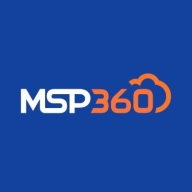

MSP360 Backup and NetApp Cloud Backup compete in the data protection arena. NetApp Cloud Backup seems to have the upper hand due to its comprehensive features and advanced functionalities.
Features: MSP360 Backup is valued for its simplicity, easy setup, and cross-platform compatibility. NetApp Cloud Backup is recognized for its scalability, integration with other NetApp services, and advanced data management features.
Room for Improvement: MSP360 Backup users suggest enhancements in support response times, better reporting tools, and more frequent updates and patches. NetApp Cloud Backup users recommend improvements in pricing transparency, a more intuitive setup process, and enhanced documentation.
Ease of Deployment and Customer Service: Users find MSP360 Backup straightforward to deploy with helpful but sometimes slow customer service. NetApp Cloud Backup offers a more complicated deployment process due to its advanced features, but its customer support is responsive and efficient.
Pricing and ROI: MSP360 Backup is known for its affordable pricing and good return on investment, especially for small to medium-sized businesses. NetApp Cloud Backup, although more expensive, offers features that provide substantial ROI for larger enterprises.


MSP360 Backup is a comprehensive data protection solution designed for businesses of all sizes. It offers a wide range of features and capabilities to ensure the safety and security of critical data.
With support for various storage destinations, including local drives, network shares, and cloud storage providers, MSP360 Backup provides flexibility and scalability. It also offers advanced scheduling options, allowing users to automate backups based on specific time intervals or events.
The solution supports both full and incremental backups, minimizing storage requirements and optimizing backup speed. MSP360 Backup also includes built-in encryption and compression, ensuring data privacy and reducing storage costs. Additionally, it offers easy file and folder recovery, allowing users to quickly restore lost or corrupted data.
With its intuitive user interface and robust set of features, MSP360 Backup is a reliable and efficient solution for businesses looking to protect their valuable data.
NetApp Cloud Backup is a fully integrated service for cloud backup and restoration. It was created to comply fully with NetApp's native data management software ONTAP, used for hybrid cloud experience. NetApp Cloud Backup is used to create backup and restoration for the protection and archiving of data, databases, and virtual machines related to the Cloud and On-Premises data in ONTAP. The way NetApp Cloud Backup works is by automatically creating block-level incremental backups. This ensures that the created backups are very fast and easy to restore. It is suitable for data protection regarding on-premises software as well as in the public cloud. NetApp Cloud Backup provides users with the ability to protect their cloud data at affordable prices and with a user-friendly interface so they don't need a lot of technical knowledge to be able to secure their cloud storage.
The copies created by NetApp Cloud Backup can be stored in the user's personal object storage in the cloud as well as on premises with StorageGRID - NetApp's storage platform. The backup copies can be restored to the original source or to a different source in Cloud Volumes ONTAP. NetApp Cloud Backup provides backups to AWS, Azure, and Google Cloud.
The features NetApp Cloud Backup provides include:
In addition to enhanced security and protection from malicious attacks, the advantages of using NetApp Cloud Backup include:
Abbasi P., a User at a financial services firm, likes that NetApp Cloud Backup is a completely agentless solution.
A Service Manager at a tech services company values its stability, scalability, and good technical support.
We monitor all Cloud Backup reviews to prevent fraudulent reviews and keep review quality high. We do not post reviews by company employees or direct competitors. We validate each review for authenticity via cross-reference with LinkedIn, and personal follow-up with the reviewer when necessary.